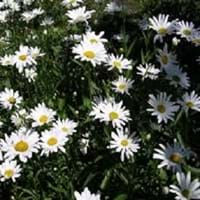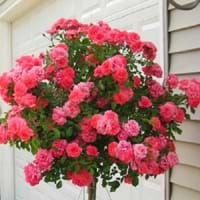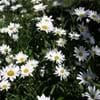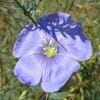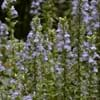Life Span
Perennial
Perennial
Origin
Europe, Northern Africa, Western Asia
Hybrid origin
Types
Not Available
Not Available
Habitat
Forest margins, gardens, Grassland, Riverbanks
All sorts of environments
USDA Hardiness Zone
3-8
5-9
Sunset Zone
A2, A3, H1, 1a, 1b, 2a, 2b, 3a, 3b, 4, 5, 6, 7, 8, 9, 10, 11, 12, 13, 14, 15, 16, 17, 18, 19, 20, 21, 22, 23, 24
H1, H2, 6, 7, 8, 9, 12, 13, 14, 15, 16, 17, 18, 19, 20, 21, 22, 23, 24
Habit
Clump-Forming
Upright/Erect
Flower Color
White, Yellow
Red, Ivory
Flower Color Modifier
Bicolor
Not Available
Fruit Color
Not Available
Non Fruiting Plant
Leaf Color in Spring
Dark Green
Dark Green
Leaf Color in Summer
Dark Green
Dark Green
Leaf Color in Fall
Dark Green
Dark Green, Yellow green, Orange Red
Leaf Color in Winter
Light Green
Light Green
Leaf Shape
Irregular
Pinnate
Plant Season
Spring, Summer, Fall
Spring, Summer, Fall
Sunlight
Full Sun, Partial Sun, Partial shade
Full Sun, Partial Sun
Type of Soil
Loam
Loam, Sand
The pH of Soil
Acidic, Neutral
Acidic, Neutral
Soil Drainage
Average
Well drained
Bloom Time
Late Spring, Early Summer, Summer, Late Summer, Early Fall, Fall
Spring, Late Spring, Early Summer, Summer, Late Summer, Early Fall, Fall
Repeat Bloomer
No
Not Available
Tolerances
Drought
Drought
Where to Plant?
Ground, Pot
Container, Ground, Pot
How to Plant?
Seedlings, Stem Planting, Transplanting
Cuttings
Plant Maintenance
Medium
Medium
Watering Requirements
Do Not over Water, Requires watering in the growing season, Water when soil is dry
Average Water Needs
In Summer
Lots of watering
Lots of watering
In Spring
Moderate
Moderate
In Winter
Average Water
Average Water
Soil pH
Acidic, Neutral
Acidic, Neutral
Soil Type
Loam
Loam, Sand
Soil Drainage Capacity
Average
Well drained
Sun Exposure
Full Sun, Partial Sun, Partial shade
Full Sun, Partial Sun
Pruning
Remove damaged leaves, Remove dead branches, Remove dead leaves
Remove damaged leaves, Remove dead branches, Remove dead leaves
Fertilizers
All-Purpose Liquid Fertilizer
All-Purpose Liquid Fertilizer
Pests and Diseases
Red blotch
Beetles, Black Spot, Caterpillars, Downy mildew, Mosaic viruses, Powdery mildew, Rust, Scale insects, Thripes
Plant Tolerance
Drought
Drought
Flower Petal Number
Double
Double
Edible Fruit
No
Not Available
Foliage Texture
Medium
Medium
Foliage Sheen
Matte
Glossy
Invasive
No
Not Available
Self-Sowing
No
Not Available
Attracts
Bees, Birds, Butterflies
Birds, Butterflies
Aesthetic Uses
Beautification, Showy Purposes
Showy Purposes
Beauty Benefits
Not Available
Not Available
Environmental Uses
Air purification
Air purification
Medicinal Uses
Antispasmodic, Asthma, Cough, Diuretic
Not Available
Part of Plant Used
Buds
Flowers
Other Uses
Culinary use, Used As Food
Oil is used in perfume, soaps, creams, etc.
Used As Indoor Plant
No
Yes
Used As Outdoor Plant
Yes
Yes
Garden Design
Bedding Plant, Container, Cutflower, Feature Plant, Houseplant, Mixed Border, Rock Garden, Wall, Wildflower
Container, Cutflower, Feature Plant, Foundation, Mixed Border, Topiary / Bonsai / Espalier
Botanical Name
LEUCANTHEMUM vulgare 'Angel'
Rosa Andeli
Common Name
Oxeye Daisy
Double Delight Rose, Hybrid Tea Rose
In Hindi
Oxeye डेज़ी
Double Delight Rose
In German
Margerite
Double Delight Rose
In French
Grande marguerite
Double Delight Rose
In Spanish
margarita de ojo de buey
Double Delight Rose
In Greek
μαργαρίτα Μαργαρίτα
Double Delight Rose
In Portuguese
Rainha Margarida
Prazer dobro Rosa
In Polish
piwonie
Double Delight Rose
In Latin
oxeye Daisy
Double Delight Rose
Phylum
Anthophyta
Magnoliophyta
Class
Magnoliopsida
Magnoliopsida
Family
Asteraceae
Rosaceae
Clade
Angiosperms, Asterids, Eudicots
Not Available
Tribe
Heliantheae
Not Available
Subfamily
Asteroideae
Not Available
Number of Species
Not Available
Not Available
Season and Care of Oxeye Daisy and Double Delight Rose
Season and care of Oxeye Daisy and Double Delight Rose is important to know. While considering everything about Oxeye Daisy and Double Delight Rose Care, growing season is an essential factor. Oxeye Daisy season is Spring, Summer and Fall and Double Delight Rose season is Spring, Summer and Fall. The type of soil for Oxeye Daisy is Loam and for Double Delight Rose is Loam, Sand while the PH of soil for Oxeye Daisy is Acidic, Neutral and for Double Delight Rose is Acidic, Neutral.
Oxeye Daisy and Double Delight Rose Physical Information
Oxeye Daisy and Double Delight Rose physical information is very important for comparison. Oxeye Daisy height is 17.80 cm and width 25.40 cm whereas Double Delight Rose height is 90.00 cm and width 90.00 cm. The color specification of Oxeye Daisy and Double Delight Rose are as follows:
Oxeye Daisy flower color: White and Yellow
Oxeye Daisy leaf color: Dark Green
Double Delight Rose flower color: Red and Ivory
- Double Delight Rose leaf color: Dark Green
Care of Oxeye Daisy and Double Delight Rose
Care of Oxeye Daisy and Double Delight Rose include pruning, fertilizers, watering etc. Oxeye Daisy pruning is done Remove damaged leaves, Remove dead branches and Remove dead leaves and Double Delight Rose pruning is done Remove damaged leaves, Remove dead branches and Remove dead leaves. In summer Oxeye Daisy needs Lots of watering and in winter, it needs Average Water. Whereas, in summer Double Delight Rose needs Lots of watering and in winter, it needs Average Water.
